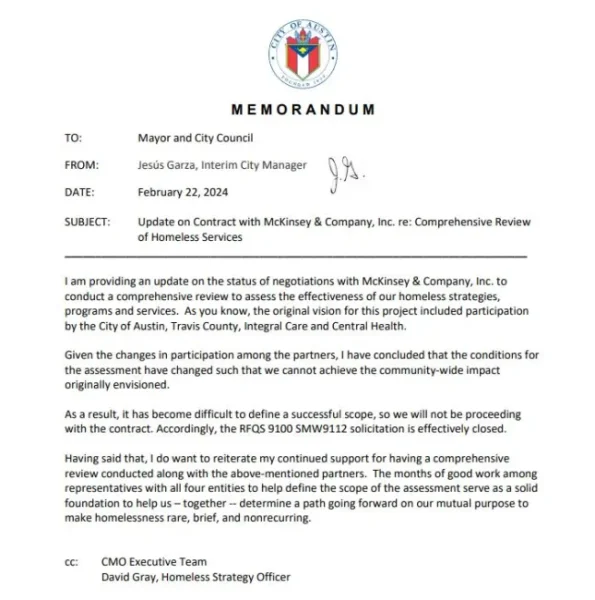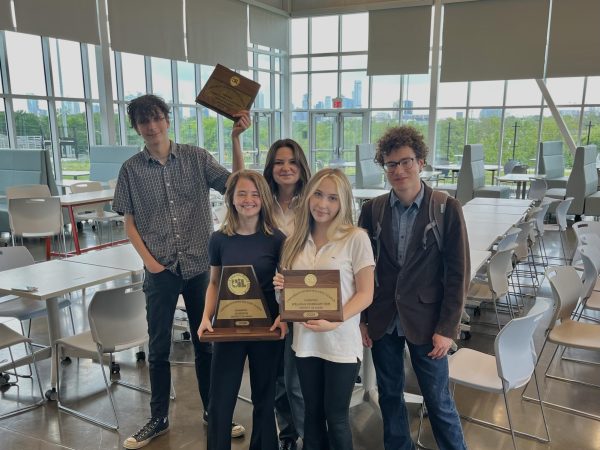Response to response training mixed
Some see training as helpful; others believe it heightens anxiety
On March 7, Grant Burnett helped give a presentation on safety training at McCallum. “It’s just very important to try to be proactive on these trainings and just get everyone’s minds in the emergency preparedness world,” Burnett said. “This is the age we live in now [so] you can’t freeze when these things arise; you need to have a plan.”
May 3, 2019
The events of Feb. 14 at McCallum are still lingering in the minds of many students. As rumors spread that the friend of a recently arrested MAC student was going to open fire on the school, panic ensued, leading to low attendance and increased caution throughout the school.
In the aftermath of that incident, the administration stated that it is not going to stand around and wait for the next active shooter scare. Instead, they would take action to better prepare students, staff and everyone else on campus in case a future situation like the events of Valentine’s Day occurs in the future.
“We’re always thinking about campus safety,” assistant principal Andy Baxa said. “We’re also thinking about what we can do to make our campus more secure moving forward.”
On Thursday, March 7, exactly three weeks after the rumors spread, teachers, administration, office staff and custodians filed in to the cafeteria at 8:45 a.m. for mandatory critical response training. The training was lead by Amber Gardner and Grant Burnett, two officials from the AISD emergency management bureau, joined by Lieutenant Rodney Anderson of the AISD Police Department.

During the student safety training on March 6, Junior Marisa Goodson asks Burnett a question.
The training was a response to the threats made to McCallum on those few nerve-racking days in February. Although the training did not exclusively focus on an active shooter situation, it was a major part of it. The Shield has previously critiqued the fact that school officials only conduct fire and lockdown drills once a month, during the same 22-minute time period at the end of first and fifth periods; because there has never been any training for an active shooter situation, the events of Feb. 14 left students and teachers even more concerned for their safety.
“My initial reaction was confusion and nerves because no one really knew what was going on,” sophomore Harper Cummings said. “I didn’t know what to do [in the case of an active shooter] and I don’t really now [either]. I don’t think you can really know what to do until it happens.”
In response to these threats, AISD set up the critical response training to better inform the staff of what they are to do in these situations. The officials talked through a PowerPoint presentation listing off the different scenarios and subsequent procedures before receiving questions from the audience of teachers.
“Critical incident response training is required statewide and nationally now,” Gardner said. “We provide it for staff members, specifically so that they are brought up to speed on what’s happening currently and how they can prepare.”
The biggest thing we do as a campus is educate, make sure everyone knows to be mindful and to be vigilant, and notify us because [the students] are the first line.
— assistant principal Andy Baxa
Monday through Thursday of the following week, each grade, on their assigned day, filed into the MAC theater to hear the presentation. Students were shown the same PowerPoint before being able to comment and ask questions.
“It’s just very important to try to be proactive on these trainings and just get everyone’s minds in the emergency preparedness world,” Burnett said. “This is the age we live in now [so] you can’t freeze when these things arise; you need to have a plan.”
Many teachers found the training to be helpful, informative, and they were glad to see something being done to further the safety of the school. It allowed them to ask any questions they had and address their concerns.
“I think that in the wake of situations that have occurred that it’s in the district’s best interest to do everything they can to prepare us for any situation that occurs,” world history teacher Greg Anderson said. “The training that we received today did give some additional pointers, but what they’ve been showing us and asking us to do has, in my five years at McCallum, been very different and much more proactive.”
Following the threats, some teachers talked to their students about what they would do in an active shooter situation. Some even took this opportunity to talk to administration about possible changes they wanted to see to the future of safety training at McCallum.
“[My students and I] had a couple of conversations after recent events,” Anderson said. “I take it very seriously and their safety is very important to [me], And [so is discussing] the dangers of rumors and the dangers of loose talk on social media, especially in this day and age, [because they] can be just as dangerous as an actual threat as we saw play out.”
The school has already made many changes to the campus and its environment. After a massive shooting on Feb. 14, 2018 at a high school in Parkland, Fla., left 17 people dead and more seriously injured and traumatized, McCallum implemented its own program: LOCK. Students experience the LOCK program every day when they choose to take an outdoor route to class and find the door they’re trying to use is locked.
“We have taken steps over the last couple years to make our campus more secure,” Baxa said. “That started last year when we started instituting the LOCK program [for] more awareness. If you see something, say something [and] make sure we keep our doors locked.”
The biggest advice I’d have for students is just try to go about your life, live your life, don’t live in fear of what’s going to happen, enjoy your day, enjoy your time. But at the same time, be mindful of your surroundings, be mindful of who and what’s going on around you and be nice to people.
— Andy Baxa
LOCK requires that outside doors be locked at all times during school hours unless designated to remain unlocked, that all classroom doors automatically lock when closed, that students be made aware of who to call (an administrator) in the case of suspicious activity and also that they be made aware of emergency procedures. Although it’s left students all over campus knocking on doors for someone to left them back in, the LOCK program was deemed necessary by the district and by the MAC administration.
“I’ve actually already seen very positive changes on this campus,” Anderson said. “The policy of locking doors [and] of the teachers wearing their badges,” Anderson said. “These seem like very simple things, but they make a big difference; if you don’t have identification, you have not been approved to be in the building.”
The administration wants students to know, however, that the best thing they can do is to say something when they see or hear any suspicious activity so the appropriate people can handle it in a timely manner. It is important for them to know as soon as possible when the school might be in danger so action can be taken to neutralize the threat.
“We want [students] to come to us with any threats even if you don’t think it’s credible or don’t know if it’s credible,” Baxa said. “The biggest thing we do as a campus is educate, make sure everyone knows to be mindful and to be vigilant, and notify us because [the students] are the first line.”
The merits of see something, say something were illustrated on March 15 when a student alerted McCallum administrators that another student had made a threat on the McCallum campus via social media. The AISD police investigated the threat, identified the student and detained the student for questioning.
Although Officer John Yoder declined to comment further due to concern of breach of confidentiality, he gave the same advice to students.
“The best advice I can give [students] is, if you see something, say something,” Officer Yoder said.
Some staff members, however, took issue with the actions taken to prepare students for hypothetical attacks on the campus. They don’t believe it’s necessary to focus on training because it raises anxiety levels.
“I feel OK about [the lack of active shooter training] because I think the chances of that happening have been proven to be well below 1 percent,” U.S. history teacher Oakley Barber said. “I think that all this attention we’re giving to active shooters and school shootings, while to some degree sensible, is also contributing to this epidemic of anxiety.”
Barber believes that being prepared is important but that we shouldn’t continue to dwell overly on these events and threats, as it instills fear and anxiety in students about coming to school.
Baxa wants to spread a similar mentality to students when it comes to balancing anxiety and preparedness. He is taking action to prevent rumors and threats from affecting the McCallum community in the future, but he also doesn’t want students to worry for their safety because it does create so much negativity and chaos.
“The biggest advice I’d have for students is just try to go about your life, live your life, don’t live in fear of what’s going to happen, enjoy your day, enjoy your time,” Baxa said. “But at the same time, be mindful of your surroundings, be mindful of who and what’s going on around you and be nice to people.”
Anderson believes that addressing safety issues is a necessary step toward safety but regrets the heightened anxiety that he acknowledges is a consequence.
“I’m sorry that this is even a thing that we have to talk about,” Anderson said, addressing the students. “I’m sorry that this is an aspect of your youth, of growing up in this time period because it shouldn’t be that way.”



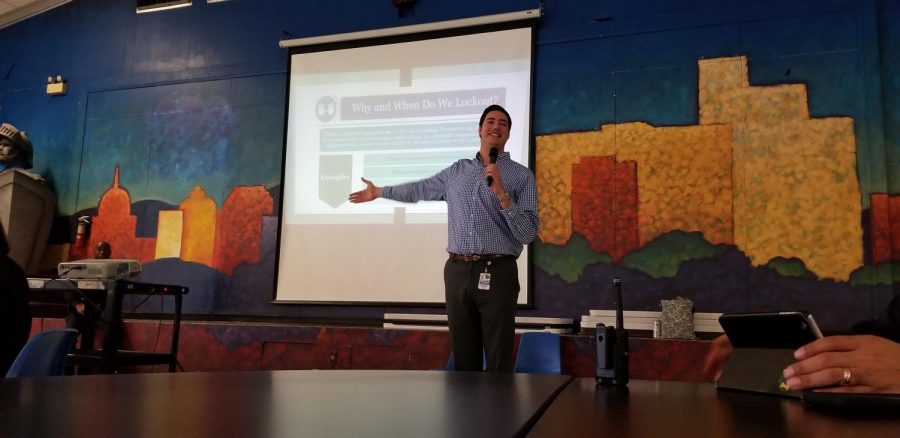


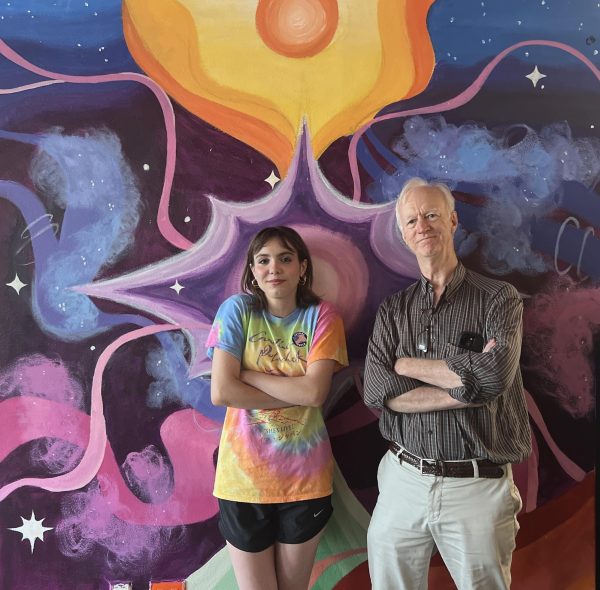
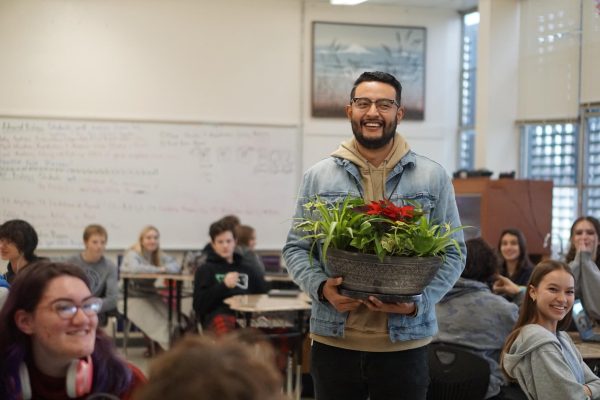
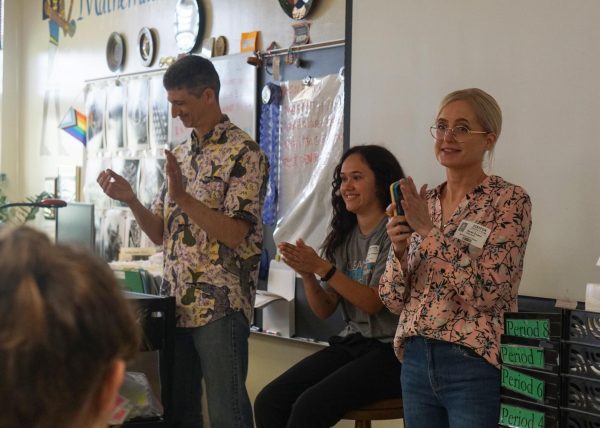

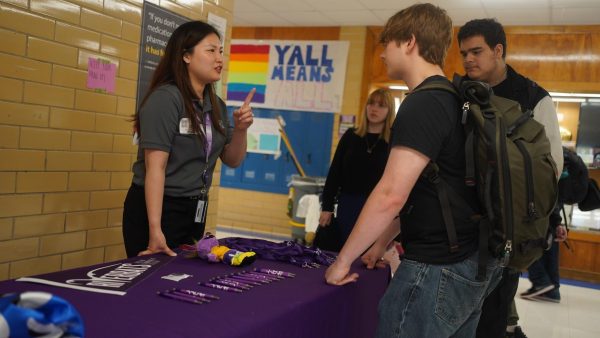

![With the AISD rank and GPA discrepancies, some students had significant changes to their stats. College and career counselor Camille Nix worked with students to appeal their college decisions if they got rejected from schools depending on their previous stats before getting updated. Students worked with Nix to update schools on their new stats in order to fully get their appropriate decisions. “Those who already were accepted [won’t be affected], but it could factor in if a student appeals their initial decision,” Principal Andy Baxa said.](https://macshieldonline.com/wp-content/uploads/2024/04/53674616658_18d367e00f_o-600x338.jpg)
